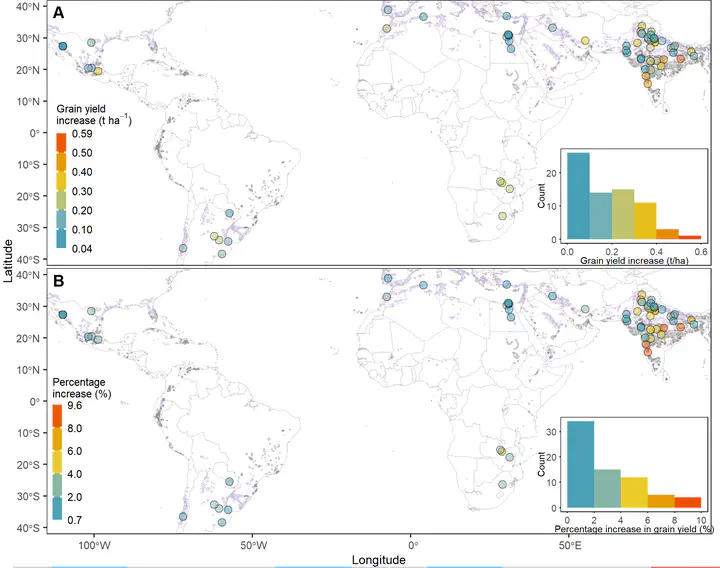Phenological optimization of late reproductive phase for raising wheat yield potential in irrigated mega-environments

Abstract
Increasing grain number through fine-tuning duration of the late reproductive phase (LRP; terminal spikelet to anthesis) without altering anthesis time has been proposed as a genetic strategy to increase yield potential (YP) of wheat. Here we conducted a modelling analysis to evaluate the potential of fine-tuning LRP in raising YP in irrigated mega-environments. Using the known optimal anthesis and sowing date of current elite benchmark genotypes, we applied a gene-based phenology model for long-term simulations of phenological stages and yield-related variables of all potential germplasm with the same duration to anthesis as the benchmark genotypes. These diverse genotypes had the same duration to anthesis but varying LRP duration. Lengthening LRP increased YP and harvest index by increasing grain number to some extent and an excessively long LRP reduced YP due to reduced time for canopy construction for high biomass production of pre-anthesis phase. The current elite genotypes could have their LRP extended for higher YP in most sites. Genotypes with a ratio (0.42) of the duration of LRP to pre-anthesis phase ensured high yields (>= 95% of YP) with their optimal sowing and anthesis dates. Optimization of intermediate growth stages could be further evaluated in breeding programs to improve YP.